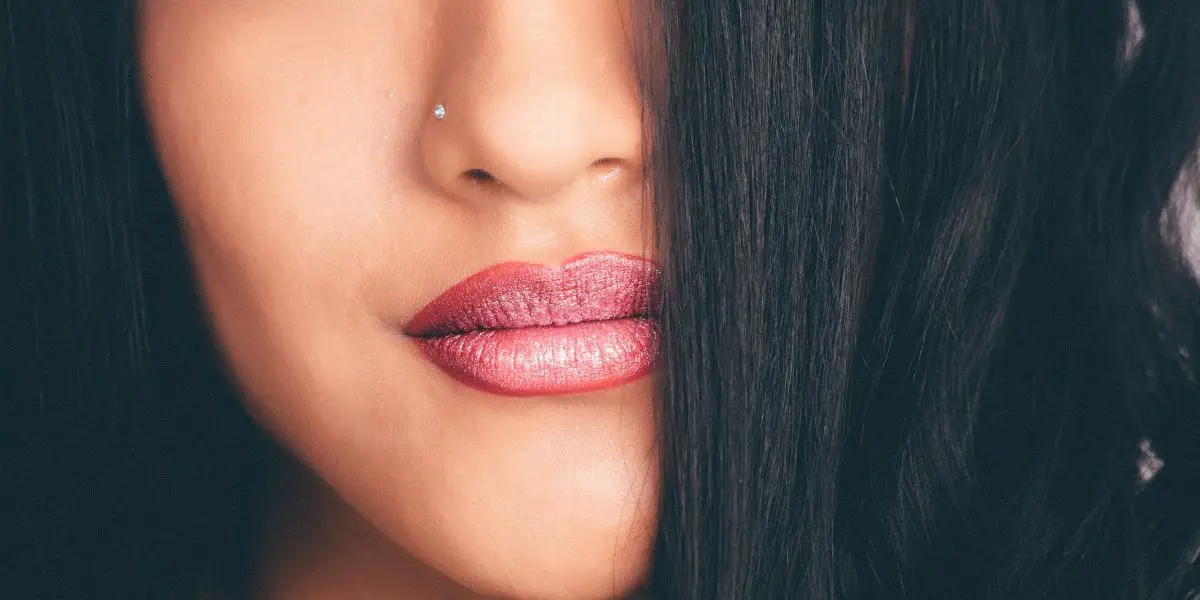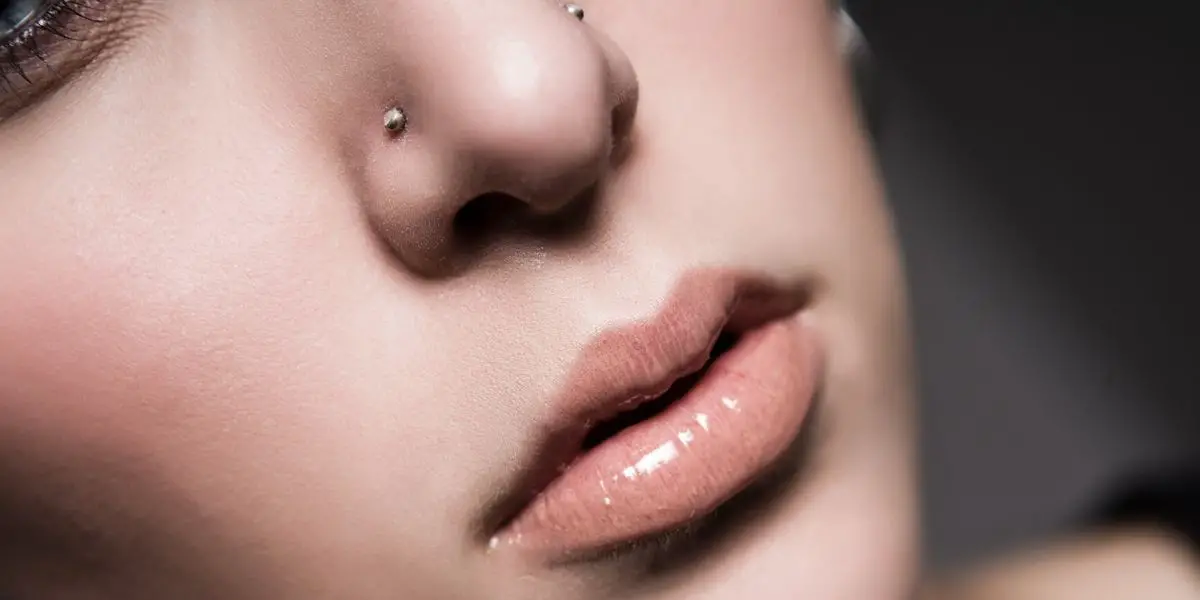If you are considering the best nose piercing position, it is not unusual to be wondering about which side is the best for nose piercing. The position or side of the nose to use for piercing depends on a number of factors which include personal, religious, and even cultural preferences. Some of these factors that many people use in determining where to pierce the nose include:
1. Cultural Factors
The most influential culture that determines nose piercing sides and position is the Ayurvedic tradition. Ayurvedic reasoning says that piercing the left side of the nose makes childbirth easier, as a woman’s left nostril is connected to the reproductive organs. Chinese medicine also indicates that women should be pierced on the left and men on the right.
There are so many interpretations associated with nose jewelry – the side or position, depending on your culture. If this is something you identify with, it can make things easier in terms of which side to pierce. However, which side you get pierced really depends on personal preference.
2. Religious Factors
There may be some religious associations with nose jewelry positions, but this is not very clear. Many people think that religions like Islam have something to do with nose piercings, but this is more of a cultural association that a religious one. Most Muslim women are known to have nose piercings, but this is often more of a cultural factor and personal style than a religious practice.
3. Personal Factors
People have the freedom to choose their style and do whatever they think can enhance their beauty. If you don’t have a cultural or religious basis or reasons for getting a nose piercing, your personal reasons should be enough to encourage you to get one if you are convinced about your choice.
Things to Consider Before Deciding on a Nose Piercing Position
Sometimes personal desires to have nose jewelry can often lead to indecisiveness, but there are several things to consider when making a decision. Some of these include:
1. The shape of your Face
For those with asymmetrical face shape, the piercing will flatter either side, but those with asymmetrical faces probably know which side will look more flattering with a stud or ring compared to the other. For this, you can try an artificial nose ring out first to see which side is a better fit.
2. Facial Features
Another thing to consider is facial features. Any moles, beauty marks, or other distinguishing features on your face will create clutter when a piercing is added. So it might be best to move the stud or ring to the opposite side of the face.
Most noses are symmetrical, but if you have a “good side,” consider whether you want to compliment it or enhance the other side. Other piercings on your face might also make a difference in symmetry, as you can balance out one side with the other by piercing the opposite side.
Depending on which side of your face your hair falls, you’ll want to put the piercing on the opposite side of the face, which gives facial balance and improves visibility.
3. Sleeping Pattern
One of the most practical considerations for picking a side should include which side you have a tendency to sleep on more so that you can avoid your stud or nose ring falling out all the time, as well as avoiding a lot of discomfort after piercing.
Don’t worry if you just can’t decide on which side is best for nose piercing for you. There’s always the option of doing both. It’s not unusual to get either side of the nose pierced. For example, there is a septum ring, which goes through the middle cartilage of the nose. The septum piercing is trendy and has risen in popularity as celebrities from Rihanna to Kylie Jenner accessorize with the symmetrical piercing.
Types of Nose Piercing
In addition to the nose piercing position that is most suitable for you, it’s also important to understand the type of nose piercing you want to have before making an appointment. Each location on the nose differs in pain and healing time and can have an impact on the type of jewelry you can choose. Some of the different types of nose piercings include:
1. Nostril Piercing

This is the most common type of nose piercing and it can be done on the left or right part of your nose. This piercing is done in the lower, soft part of the nose right above the lip area. The location is also dependent on the nose and the nerve structure. Nostril pieces vary from delicate studs to heavy rings. The piercing usually ranges from 18 to 20 gauges and the healing time is 4 to 6 months.
Many people question whether they can immediately get their nostril pierced with a ring instead of a stud. The answer is yes…but only after the piercing has healed. Then, you can go back to the shop and have the stud replaced with a ring.
2. High Nostril Piercing
High nostril piercing is a unique variation of the nostril piercing, it is done slightly higher than the lower part of the nostril. This allows the layering of delicate rings or a mix of jewelry as a statement piece. However, the variety of nose jewelry that you can use with this piercing is limited. You can choose between L-shaped pins, nostril screw or studs.
Hoops and rings are excluded or difficult to use with this nose piercing position. Upper nostril piercings can also be difficult to do because you will need an experienced piercer to pierce the area in order for it to be both a sanitary and relatively painless experience. The healing period for this is also 4 to 6 months.
3. Septum Piercing

Septum piercings, as previously mentioned, are a fashionable style. They can be accessorized with a variety of horseshoe styles, hoops, barbells, rings, and gauges, and can be easily removed whenever you want. However, this style requires expertise when doing it because it is a cartilage piercing in the flap between the nostrils. You should confirm if the piercer has prior experience with septums.
For a clear and neat septum piercing, the piercer should properly know where the cartilage begins and ends. The piercing process might also take more time than other places on the nose because it needs a bit of maneuvering. The good thing about this piercing position is that the healing time is shorter than others at 6 to 8 weeks.
4. Bridge Piercing
One of the more intimidating nose piercing options is a bridge piercing, which is usually done in an area with a lot of bone and cartilage. However, the actual piercing does not go through the bone. Rather, it’s a piercing through the skin on the bridge. It also heals much faster than most other piercings at 8 to 12 weeks. The downside to this piercing is the high chance of migration.
Migration is when the body rejects the piercing and tries to push it out, moving the piercing and the jewelry closer to the surface. In this case, there is no other solution other than to remove it. To avoid migration, most piercers recommend wearing a curved barbell and not a straight one.
5. Vertical Nose Tip
Possibly the rarest piercing is vertical nose tip or “rhino,” which requires a specific nose structure and vain placement, and it has one of the longest healing times of over 9 months. The piercing begins directly above the tip of the nose and ends under the nose. It’s important to make sure this piercing is right for you since the procedure is lengthy and requires a piercer with experience. Oftentimes, the recommended nose jewelry is a curved barbell.
6. Septril Piercing
The septril piercing is one of the toughest piercings to work on and it requires a lot of patience. You can only receive this piercing if the septum has previously been gauged since the septril piercing goes through that gauged area and shows right under the nose tip. The process involves internal skin and causes a lot of pain.
Since a piercing gun can cause tissue damage, a hollow needle is usually used. The jewelry is tightly secured with a curved barbell. The healing time is in between 4 to 6 months.
7. Nasallang Piercing

Lastly is the nasallang piercing, which looks like you have both nostrils pierced. What really happens is a single piercing that goes through the whole nose. It starts at one nostril, goes through the cartilage, and out of the nostril. The procedure is complicated in terms of maneuvering the nose, but it should be done within one swift movement.
Once done, a post or barbell is inserted. Fortunately, there are a variety of jewelry choices for this piercing. However, the healing time is between 4 to 6 months.
Safe Metals for Nose Jewelry
There are many styles of nose jewelry to choose from, including nose screws, nose bones/studs, captive bell rings, nose hoops, straight and curved barbells, horseshoes, and L-shaped pins. However, just like the variety of jewelry, there’s also a variety of metals from which these jewelry is made and some of these metals may not be very friendly with your body. This can result in piercing rejections, allergy, and sensitivity issues because the body may be reacting or trying to reject some of these metals.
There three most important things to consider when picking jewelry for your nose piercing. You should ensure that your choice of jewelry metal is hypoallergenic -which means the metal is less likely to cause allergic reactions. The metal you choose should also be biocompatible – which simply means that the metal cannot cause an allergic response, injury, or toxicity to your body. Also, it is important to use a metal that is not plated or covered with another metal e.g. gold plated jewelry. These types of metals have a high likelihood to cause infections and allergic reactions.
That is why it is important to use only safe metals for nose piercing or nose jewelry when doing your nose piercing or any piercing at all. This is will help in reducing the chances of having an allergic response or piercing rejection. Some of the safe jewelry to use especially for people with sensitive skin include:
1. Titanium
Titanium is great for sensitive skin. It doesn’t just give off a fabulous, clean, and crisp shine, but it is the safest metal to use for all body jewelry.
2. Surgical Stainless Steel
Surgical quality stainless steel is slightly cheaper than titanium and is still readily used in body jewelry. It’s safe to use, but not 100% biocompatible as titanium. Most people feel completely fine with steel, but people with sensitive skin should most likely avoid it and choose titanium instead.
3. Gold
This is an elegant style metal, but the body easily rejects it. Some people can wear it without irritation, but gold should be avoided on new piercings. Once a piercing has healed, gold-plated jewelry shouldn’t be used but you can use a 14k or 18k gold as well.
In terms of metals that should be avoided at all costs, sterling silver is easily tarnished and can cause bacterial growth and allergic reactions. Nickel is another metal that tends to cause intense rashes when exposed to skin.
Nose Piercing FAQs
Is Nose Piercing Acceptable in Islam?
It appears that there is no clear cut Islamic instruction or guideline about nose piercings in Islam, but most Muslims tend to like and do it. A lot of Muslim women who have nose piercings do it because of traditional and cultural reasons than because of religious reasons. It happens that most cultures that tend to have or encourage nose piercings may also be closely associated with Muslims.
Can Nose Piercings Migrate?
Yes, certain nose piercings can migrate if they are not done properly or if there are complications with the piercing. The most common type of nose piercing with a high risk of migration is the bridge piercing.
Can I Swim with Nose Piercing?
Yes, you can swim with your nose piercing but you should do this only after the piercing has healed. There is an increased risk of the piercing getting infected if you go swimming before it is healed.
Can I wear Makeup with Nose Piercing?
While it is okay to wear makeup after getting a nose piercing, you should avoid any heavy makeup like a heavy/thick makeup foundation especially around the site of the piercing that can contaminate the piercing and cause an infection.



